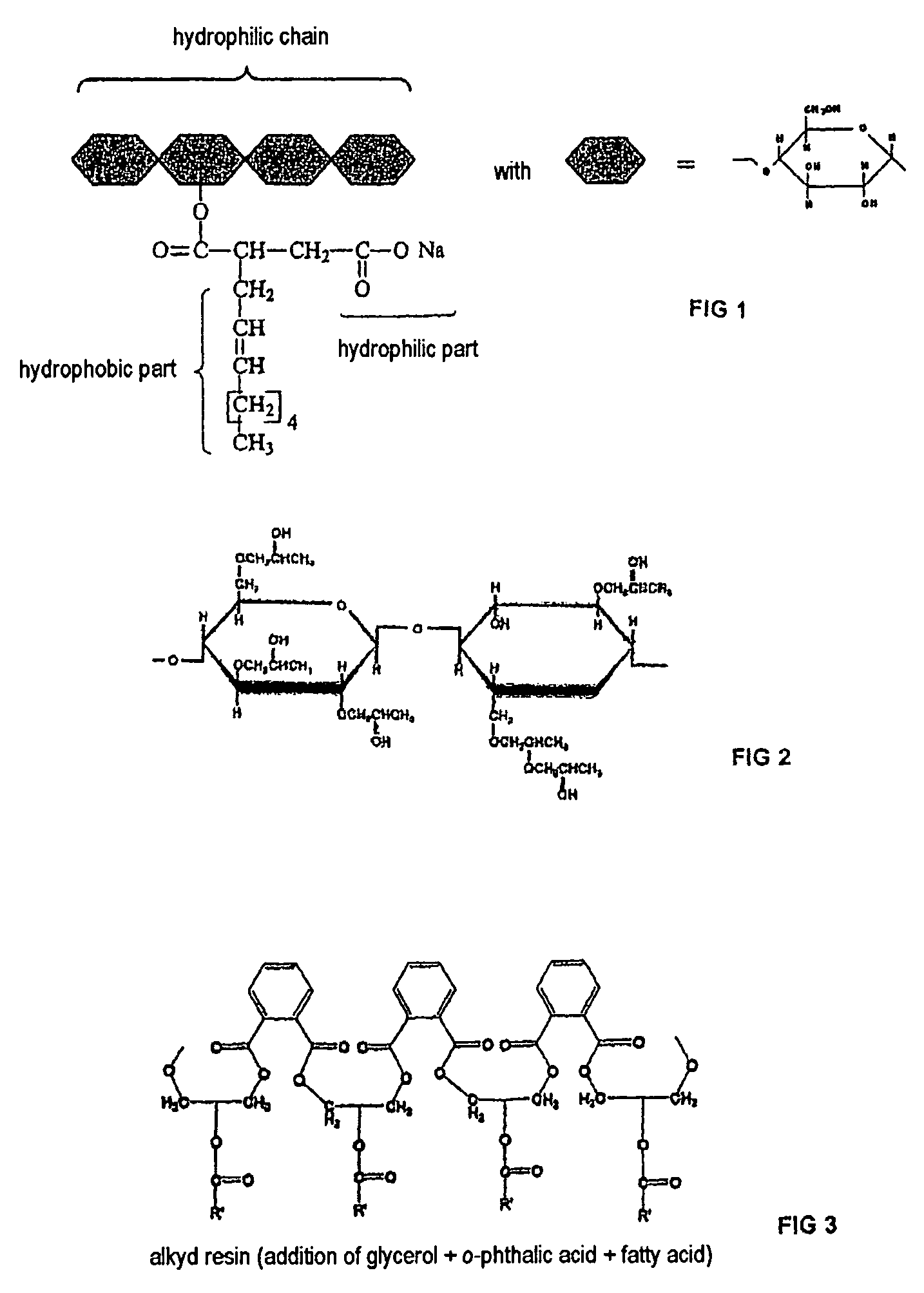Delayed-effect agronomic treatment agent, in particular for seed germination and plant development
a technology of delayed effect and agronomic treatment agent, which is applied in the field of non-aerial agronomy, can solve the problems of not being able to produce capsules, not being able to show sufficient mechanical strength, etc., and achieves the effects of increasing the resistance of plants to environmental stresses, stabilizing the ph of the substrate, and promoting plant growth
- Summary
- Abstract
- Description
- Claims
- Application Information
AI Technical Summary
Benefits of technology
Problems solved by technology
Method used
Image
Examples
example 1
Production of an Intermediate Material, in Solid and Divided Form, from a Porous Mineral Material in Solid and Divided Form, and from an Active Species in Liquid Phase
[0085]According to this example, the active species for the agronomic treatment consists of an essential oil having, in a known manner, a disinfecting and protective action against pathogens in a soil. This essential oil is, for example, essential oil of thyme, manufactured and sold by the company Flore de Saintonge, under the name Hethyt 600R. This essential oil will be referred to hereinbelow as HE.
[0086]According to this example, the porous mineral material in solid and divided form is a modified diatomaceous earth, i.e. by reaction between a siliceous diatom, hydrated lime, and water, for example the product solid by the company World Minerals under the name CALFLO C®.
[0087]The grains of this material are irregular and angular, and have a morphology offering intra-porosity and inter-porosity, having overall a speci...
example 2
Encapsulation of the Intermediate Material Obtained According to Example 1 with a Hydrophilic Polymer, to Obtain a Powder
[0103]Intermediate material, referred to hereinbelow as Mi, as obtained according to Example 1, and consequently in the form of micrograins, is thus provided.
[0104]It is chosen to coat these grains with a hydrophilic polymer in aqueous phase. The hydrophilic polymer selected is degradable.
[0105]In the laboratory, the abovementioned intermediate material is encapsulated according to the dry emulsion protocol below:[0106]1. an aqueous solution of the hydrophilic polymer is provided;[0107]2. the Mi is dispersed in this aqueous solution to obtain a dispersion;[0108]3. the aqueous dispersion is spread onto glass plates, and the water is evaporated off in a controlled manner, to precipitate by coalescence or coacervation the hydrophilic polymer around the grains of the Mi, and to obtain a powder.
[0109]Two hydrophilic polymers were selected and tested, namely:[0110]a mod...
example 3
Encapsulation of the Powder Obtained According to Example 2 with a Hydrophobic Polymer, to Obtain an Agronomic Treating Agent in Solid and Divided Form
[0139]In general, according to this example, a powder as obtained according to Example 2 is provided and, using a hydrophobic polymer that has a good water-barrier effect, and a relatively rapid rate of degradation in the soil, an aqueous dispersion of said polymer is formed. Next, the powder is coated with the hydrophobic polymer, to obtain globules, and the water is removed from these globules to obtain the desired treating agent.
[0140]The hydrophobic polymer used is a poly(lactic acid) or PLA, in the form of nanoparticles dispersed in water, PLA being particularly advantageous on account of its film-forming nature, and of its possible degradation by controlled hydrolysis according to its molar mass.
[0141]The hydrophobic polymer used is also a film-forming alkyd resin, dispersed in water in the form of nanoparticles, and generally c...
PUM
 Login to View More
Login to View More Abstract
Description
Claims
Application Information
 Login to View More
Login to View More - R&D
- Intellectual Property
- Life Sciences
- Materials
- Tech Scout
- Unparalleled Data Quality
- Higher Quality Content
- 60% Fewer Hallucinations
Browse by: Latest US Patents, China's latest patents, Technical Efficacy Thesaurus, Application Domain, Technology Topic, Popular Technical Reports.
© 2025 PatSnap. All rights reserved.Legal|Privacy policy|Modern Slavery Act Transparency Statement|Sitemap|About US| Contact US: help@patsnap.com

